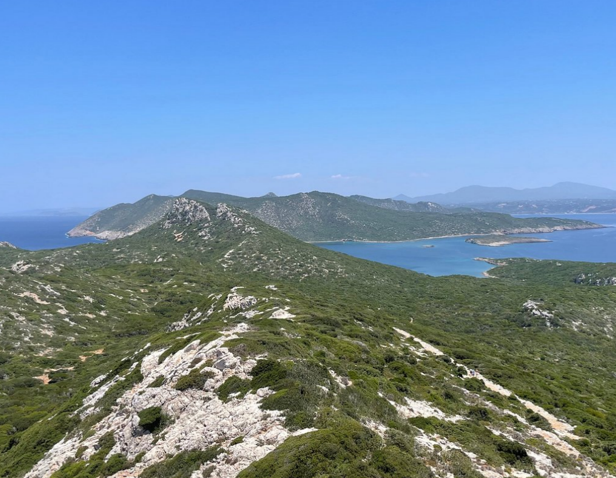
Sapienza Island

Sapienza
Island
Sapienza is a Greek island off the southern coast of the Peloponnese, near the village of Methoni. It is the second-largest of the so-called Messenian Oinousses islands, which are comprised of Agia Marina, Sapienza and Schiza. The island is known for its many shipwrecks because it is located along the main shipping route between Italy and the Middle East. One of these shipwrecks occurred in the 3rd century AD and contained columns from the courtyard of Caesar in Caesarea.
This small island, measuring only about 9 square kilometers, boasts a rich history and natural beauty that captivates visitors. The island's name, Sapienza, is of Italian origin meaning wisdom, as it reflects the historical connections between the region and the Venetian Republic. Before the Greek War of Independence in 1821, Sapienza island was under Venetian rule due to the treaty of Sapienza in 1209. This changed after the War of Independence where Sapienza became part of the Greek state.- despite other claims of ownership by various countries.
Despite its relatively small size, Sapienza hosts a variety of wildlife that thrives in its diverse ecosystems. This includes snakes, lizards, seabirds, rodents and the famous kri-kri (also known as the Cretan Goat). It was brought to the island in great numbers in order to protect the species from extinction. Dating back to the Minoan civilization, the kri-kri was very popular amongst hunters due to its tender meat. This saw greater numbers being hunted and in 1960, the kri-kri was under threat with a population below 200. For this reason, hunting them is strictly prohibited, apart from the month of November where hunters gather on Sapienza island to predominantly hunt kri-kri (as a form of population control).
Sapienza island is very popular amongst water and marine enthusiasts. The surrounding Ionian Sea flourishes with rich marine life, and visitors to Sapienza may encounter species such as dolphins, seals, and various fish species while exploring the coastal areas. On the island itself, diverse plant species contribute to a unique ecosystem. Wildflowers, aromatic herbs, and shrubs dot the landscape, creating a colorful and fragrant environment. Today, Sapienza stands as a unique global location, as the arbutus plants on the island is the only place in the world where they transform into trees. This intriguing ecological feature has led to the inclusion of Sapienza in the Natura 2000 Network. Another unexplained phenomenon on the island is the large baren space in the center of the island where no vegetation grows. The equivalent of several football fields, the exposed red soil has given birth to numerous theories and conspiracies, including UFO landings and alien invasions.
Situated on the southeast side of the island is a lighthouse constructed in 1885 at the request of Queen Victoria of England. Erected by English builders, the stone tower stands at a height of 9.5 meters, and stands 110 meters above sea level. Accessible by a staircase comprising 75 steps, the summit of the lighthouse offers breathtaking panoramic views of both the island and the surrounding sea. Whether exploring its historical landmarks, hiking along its scenic trails, or simply enjoying the serenity of its shores, Sapienza Island offers a delightful blend of history and natural charm.
Getting There
The best way to visit the island of Sapienza Island is to hire a boat from Methoni Boats. During peak summer season (July - August), it is recommended you reserve a boat several days before your intended trip. Contact details are as follows:
-
Website: https://methoniboats.gr/en/
-
Location: Kiosk next to Methoni pier
-
Email: info@methoniboats.gr
-
Mobile: (+30) 6945967902 | (+30) 6988076719

